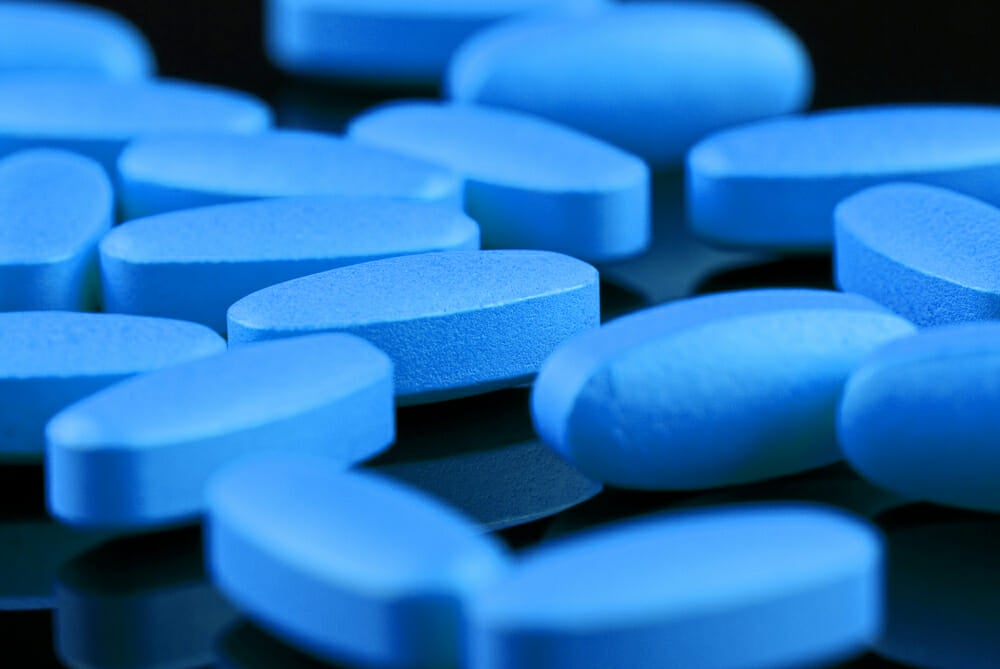Trans/Sex is a column about trans peoples’ relationships with love, sex, and their bodies. Have a topic suggestion? Contact Ana Valens at anavalens@protonmail.com or @SpaceDoctorPhD on Twitter.
. . .
There’s something incredibly hot about being a woman who can penetrate other women. Doubly so if you’re a non-op trans woman who can use her own cock to do it. After I started hooking up with other trans girls who wanted me to top them, I began embracing having a dick. It feels empowering to look down at my body and say, I’m gorgeous because my genitals are different, not in spite of them.
But while the idea of penetrating is nice, sticking your junk into another person’s something-or-other is a lot of work. Take anal sex. You have to put a towel down, find a comfortable position, lube up, finger your partner, make sure they’re relaxed and ready, and grab a condom. Then, lube yourself up, make sure you’re relaxed and ready, and line up your cock just right to slowly ease your way into your lover’s eagerly awaiting canal. That’s already hard enough for cis men. But for a trans woman who can barely maintain an erection on hormones, it’s a lot of work!
So whenever I have anal sex, I rely on Levitra. Yes, that’s an erectile dysfunction medication. It’s not the only one transfeminine people with penises can use to maintain an erection, either. For trans women across various walks of life—including full-service sex workers, adult performers, or even just a pair of lovers looking to put a trans girl’s dick to use—it can be necessary.

First, some semantics. “Erectile dysfunction medication” is more of a category than an all-encompassing description. It’s also a bit of a misnomer, as a dick doesn’t have to be hard to function or orgasm. It’s totally unnecessary, and I’d argue the name stigmatizes both trans women with estrogenized dicks and cis men who can’t get it up by claiming they have a “broken” penis. That said, gender-affirming words for Viagra aren’t exactly the cause célèbre in trans discourse. So while I’m not a fan of the term, I’ll stick with the phrase “ED medications” as a shorthand to describe the umbrella of prescription pills and injections trans women and transfeminine folks can use to maintain an erection.
I’ll also be focusing on three of the most commonly prescribed ED pills: sildenafil, vardenafil, and tadalafil, better known by their brand names Viagra, Levitra, and Cialis, respectively. In the U.S., these medications can be prescribed by a doctor or even a clinical psychologist if ED medications are vital to a patient’s emotional well-being. All three drugs relax the blood vessels in the body, including the penis, by blocking phosphodiesterase type-5’s production. As more blood flows to the penis, erections become much easier to hold and maintain. That works for trans women too, although it’s complicated.
When sex educator Octavia Leona Kohner first started using hormones, her antiandrogen spironolactone, which is used to suppress testosterone, prevented her from getting and maintaining erections. This was an issue for her, as she enjoys using her genitals for penetration while topping. For a time, she relied on Viagra and Cialis for erections, and she still uses both medications occasionally for sex.
“Before taking estrogen, my dick would get rock hard and it felt rock hard all the time, and the way that my cardiovascular system worked was just like, it was a natural progression I was growing into,” Kohner explained to me over coffee and smoothies. “On Viagra and Cialis, I find that my erections [are] not as hard as they used to be, but they are more hard, [more] often than they are without Cialis or Viagra. So it just creates a firmer, longer lasting erection.”
It’s a strange experience. I’ve used Levitra on-and-off for about a year, usually for anal sex, rough oral sex, or, in a few cases, masturbating. Estrogen makes the penis’ skin thinner and more sensitive, so when I get stiff on Levitra, my cock feels like it’s trapped in gauze, unable to go any bigger if it wanted to. It almost hurts. It also feels very different from my days before I transitioned. Because sexual arousal feels much more innate on estrogen, like butterflies in my belly, getting hard just feels like a random reaction from being turned on.
“It doesn’t feel quite as, like, ‘sexy’ is almost the word [compared to erections on testosterone],” Kohner told me. “Because it’s not really attached to that emotional conduct of like, ‘I’m aroused, I’m getting hard.’ You’re just hard.”
That said, it’s relatively easy to stay hard and maintain an erection on Levitra as long as I’m staying in the moment. And it’s pretty fucking cool being a penetrative trans woman, doubly so when I’m domming. But Levitra doesn’t masculinize my dick, make my semen white, or make penetrative sex inherently more enjoyable. It just activates a physiological response.
One anonymous trans woman I spoke to compares sex on ED medications to “fucking a girl with a very realistic strap-on.” While sildenafil helps her maintain a full erection for vaginal and anal sex, it doesn’t enhance the experience by making her genitals more sensitive. Ultimately, a feminized cock is still feminized, and no amount of medication will make it feel like a penis on testosterone.
“They’re not exactly magic boner pills,” she told me. “The ease of boners is just a side effect. Give it time, and you still have to like… get yourself in the mood.”

There are many other ways to have and maintain an erection than just dickpills. Some trans adult performers use a vasodilator injection called prostaglandin (Caverject) or Trimix. These injections can provide a firm, hard erection regardless of whether the user is aroused or not, making them ideal for trans sex workers that need to stay stiff for adult shoots or penetrative sex as a full-service worker. Like ED pills, these medications are prescription-based.
There are other, non-medicinal approaches, too. One popular over-the-counter alternative is horny goat weed, a herbal supplement which blocks phosphodiesterase type-5’s production at a much weaker level than Viagra, Levitra, and Cialis. Cock rings can help provide a slight erection by restricting blood flow, too, and they work well with ED medications. Kohner also recommends stimulating gels mixed with lube to provide a rush of blood to a trans woman’s genitals. Granted, none of these solutions work as well as popping a prescription pill or using an injection, but they’re great ways to sample the experience and see if it’s right for you.
Then there’s another solution I never thought about: outright removing spironolactone from one’s medical regimen. Kohner ended up dropping spiro after using Viagra and Cialis. To this day, she remains off the drug and instead relies on a high dosage of estrogen via injections to suppress testosterone in her system without outright obliterating it. As her cardiovascular system adjusted, she benefited immensely from the physiological changes, which included getting erections and maintaining a stable mood.
“I do advocate generally for people, if it’s not a triggering thing, to have testosterone in their system for a number of bodily functions, and for a number of mental and physical health stuff,” Kohner told me. Granted, Kohner isn’t a medical professional, and I don’t recommend tweaking your hormone regimen without at least checking in with your doctor.
And if you decide to use ED medication for an erection, make sure to read up on the side effects and follow the instructions carefully. Kohner suggests starting with half of the prescribed dose to experience the drug during sex without having regular erections throughout the day. Don’t take more than a doctor recommends, either, and immediately head to the ER if you experience a long-lasting erection.
Other than that, do what’s right for your body, keep an open mind, but most importantly of all, have fun.
“You don’t have to be hard to have a good time, but if you’re not having a good time because you’re not hard, you should take care of yourself,” Kohner told me.


